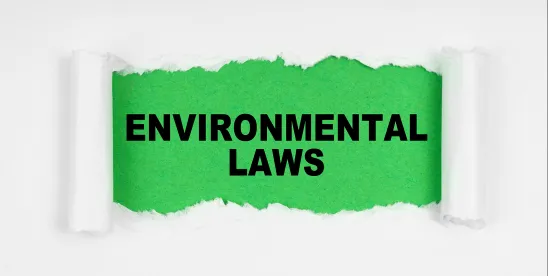On May 29, 2025, the US Supreme Court pressed the reset button on the National Environmental Policy Act (NEPA), issuing an 8-0 decision intended to convert what NEPA has become, a “judicial oak,” back into the originally intended “legislative acorn.” Justice Kavanaugh, joined by Chief Justice Roberts and Justices Thomas, Alito and Barrett, penned the opinion of the Court in Seven County Infrastructure Coalition v. Eagle County. Justice Sotomayor, joined by Justices Kagan and Jackson, wrote a concurrence.
The question before the Court was whether NEPA requires an agency to evaluate environmental impacts from projects that may be separate in time or space from the project before the agency. Under NEPA, federal agencies have an obligation to evaluate the environmental impacts of a federal action or project that are “reasonably foreseeable” effects of the action. The infrastructure project at the center of the litigation is an 88-mile-long railway in Utah’s Uinta Basin. The railway’s proposed purpose is to transport goods, predominantly expected to be waxy crude oil, out of the Basin and towards refineries along the Gulf Coast. In the project opponents’ challenge to the US Surface Transportation Board’s (STB) decision to approve the railway, the DC Circuit held that the STB had failed to consider the effects of increased oil refining along the Gulf Coast and the additional oil production that might take place in the Basin. Key to the Supreme Court’s opinion, the DC Circuit found that these effects were attributable to the railway.
Pulling from its decisions dating back to 1976, the Court’s opinion implements clear principles for NEPA analysis and judicial review of agency actions under NEPA. The Court deemed these principles necessary in response to decisions by lower federal courts that created requirements beyond those established in NEPA, resulting in fewer projects, delayed projects, unnecessarily expensive projects and fewer jobs. First, Seven County emphasizes that “the central principle of judicial review in NEPA cases is deference.” Unlike when an agency interprets a statute and is due no deference under Loper-Bright, when an agency is exercising discretion granted by statute that agency must have “broad latitude to draw a ‘manageable line’” (quoting Public Citizen). The decision provides clear direction to cease “overly intrusive (and unpredictable) review,” stating that as long as the NEPA review “addresses environmental effects from the project, courts should defer to agencies’ decisions about where to draw the line….” In the Court’s view, this deference is informed by the fact that NEPA is a procedural statute intended to put information before the decisionmaker, not to result in any particular decision. “The bedrock principle of judicial review in NEPA cases can be stated in a word: Deference.”
The Court’s opinion goes on to address the central question — whether NEPA requires the STB to consider “upstream drilling in the Uinta Basin and downstream oil refining along the Gulf Coast.” In answering the question firmly in the negative, the Court explained: “if the project at issue might lead to construction or increased use of a separate project … the agency need not consider the environmental effects of that separate project.” Presumably anticipating future factual applications of this principle, the Court acknowledges that “a new airport may someday lead to a new stretch of highway; a new pipeline to a new power plant; a new housing development to a new subway stop” but the text of NEPA focuses the agency only on the “project at hand” and not the effects “of future or geographically separate projects.” This aspect of the decision has the potential to change agency approach to NEPA review and furthers the administration’s direction in the wake of the withdrawal of the Council on Environmental Quality NEPA regulations.
The Court’s opinion addresses an issue that has been plaguing infrastructure projects in recent years: whether a project’s approval should be vacated for NEPA deficiencies, effectively requiring that the agency start over and the project stop. The Court concluded that “[e]ven if an [environmental impact statement] falls short in some respects, that deficiency may not necessarily require a court to vacate the agency’s ultimate approval of a project, at least absent reason to believe that the agency might disapprove the project if it added more to the [environmental impact statement].” The Court’s conclusion on this issue creates questions surrounding whether federal courts will be able to discern what information might lead the agency to disapprove of the project, and whether courts are qualified to do so.
Justice Sotomayor’s concurring opinion criticizes the majority for engaging in policy analysis but arrives that the same conclusion under prior Supreme Court precedent — that NEPA did not require the STB to analyze the downstream and upstream projects and their effects because the STB’s permitting statute does not allow the Board to reject the railway project because of effects that may be caused by third parties. “NEPA requires consideration of environmental impacts only if such consideration would result in information on which the agency could act.”
In Seven County, the Supreme Court reiterates and expands upon its prior NEPA precedent in an effort to redirect the federal courts and agencies — to reverse the transformation of NEPA “from a modest procedural requirement into a blunt and haphazard tool employed by project opponents … to try to stop or at least slow down new infrastructure and construction projects.” In so doing, the Supreme Court adds support to the substantial changes in NEPA implementation that are ongoing in an eventful year.




 />i
/>i

